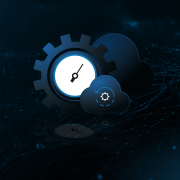
Endpoint protection matters…
As we often say in IT, all computer users can be divided into two groups. The first group consists of those who archive data, since they have once lost it. The second includes users who do not backup their data yet, because serious data loss is still ahead of them.
This little humorous saying is confirmed by experience of many IT administrators and regular users. Many of us start to think about the safety of our data once we lose it. Meanwhile, backups are one of the best, cheapest and surest ways to protect critical data from loss.
Awareness is the key
Just a few years ago, companies and various types of organisations and public administration institutions primarily protected only the data they kept on servers. At the same time, many critical data was being created and stored on workstations and notebooks. Nowadays, more and more often key information is being stored on mobile devices, such as smartphones or tablets. This is why today, it is far more important to protect data on all devices – including mobile. It is hard to imagine a professional backup of company data that would not include all client terminals.
It should be also noted that in the past few years, the way we work with corporate documents has significantly changed. In many companies, cloud solutions such as Google Docs, Microsoft Office 365, or Adobe Creative Cloud have already become a standard, and the cloud that supports all these systems is also used for storing of business-critical data. Therefore its protection should be included in a properly designed security policy.
Today’s threats
Security policy alone is still not enough to protect our data stored on desktop computers, laptops or smartphones against loss. In many companies, it is becoming a standard to have solutions that protect workstations and mobile devices. These solutions are known as ‘endpoint protection.’ Such systems are designed to create a safe environment for all end devices used by employees and guarantee secure exchange of data and messages.
A complete endpoint protection system should consist of several elements: antivirus software, firewall, VPN, remote devices and applications control and management system, access control and user authentication mechanisms, spam filtering tools, software update algorithms, and automatic data backup/restore mechanism. All of these components should be centrally managed and should have no significant impact on user experience or productivity.
An example of software that allows you to build an endpoint protection system (even in a small company) is the Xopero Endpoint Agent application included with NAS servers from QNAP. It not only enables you to backup workstations as such, but also makes it possible to synchronise files between multiple workstations. This solution gives you complete control over the backup process, so even small companies can easily implement a critical data protection policy.
Today, backup and recovery systems for workstations and all kinds of mobile devices have become more significant than ever. They not only protect users against data loss, but also serve as a shield protecting employees from various external threats. In other words, they are an important component of not only security policies, but also in the planning of disaster recovery mechanisms, or more broadly – monitoring and early detection of threats.
At this point it is worth paying attention to one of the most severe security threats called ransomware – an extremely dangerous type of malware that encrypts user data for ransom in all available locations. In this way, the company may be forced to pay high ransom money and still has no guarantee that the encrypted data will be recovered. Meanwhile, a well-executed backup allows you to recover all the information from before the attack – literally in a matter of a few or dozen or so minutes.
But in order to make the recover successful in such dramatic circumstances, it is necessary to take appropriate measures in advance. You should pay attention not to make mistakes that would undermine your efforts and make it impossible to restore the status of all client terminals. The two common mistakes many businesses make are: lack of information about the backup status, and failure to test the ready backup copy. The above-mentioned Xopero app protects you against the possibility of such mistakes.
Invisible backup
For many companies, ensuring the continuity of workstation service is becoming a priority in choosing the appropriate backup and restore solutions. Besides, more and more attention is given to ensure that the backup and restore processes are invisible and imperceptible to users. In other words, traditional information retrieval from backup should be the last resort, carried out only in the event of a major accident.
That is why in modern backup systems, data availability is far more important than mere capacity – especially since few companies and organisations have business data and documents in a volume that exceeds several terabytes. Usually the size of the protected data does not exceed one terabyte. For this reason, smaller players often choose backup systems based on their own, relatively small NAS systems – such as the above-mentioned QNAP solution. The problem of enormous capacity (or using streamers and tape libraries necessary to ensure a full data backup) currently affects primarily IT service providers and businesses that engage in processing of big data.
Almost all of the currently used backup systems use a single backup engine – regardless of whether they run locally or in the cloud. In this way, companies are given not only the consistency of backups and how they are carried out and encrypted, but also a unified UI and management console. What’s more, in both cases the backup can be carried out both on local storage devices and in private or hybrid cloud.
The unified engine also allows for support of multiple platforms – such solutions can be used by Windows, Apple Mac OSX, Linux or mobile users. What’s more, on-line solutions allow for backups to be carried out without using any locally installed software. The entire process is managed and controlled by a backup server located in the customer’s premises or on the service provider’s end, using a console accessible from a web browser.
As you can guess, modern backup systems are also capable of backing up files from computers located outside the local network or company site as well as for remote workstations and servers. This includes notebooks used by remote workers as well as company physical and virtual servers running in the cloud, or leased or co-located in a remote data centre.
Protection of workstations
One of the solutions that allow for comprehensive protection of computer, laptop, tablet and smartphone data is the Polish system called Xopero. It allows for full automation of all the processes related to data security. What’s important, Xopero requires no user involvement in the backup process, because the Management Center application (which is a part of Xopero) allows for remote administration of user accounts and applications (agents) installed on company computers and mobile devices. The programme allows for control and management of all the backup processes, allowing the administrator to easily protect a large number of endpoints.
Interestingly, Xopero can be used not only for backups, but also as a great data migration tool. Thanks to centralised, comprehensive data management, it is possible to transfer information to existing or new devices for many users at once. As a result, in case of failure, all the company employees can rapidly return to work in a familiar, personalised environment.
Comments
Leave a reply
You must be logged in to post a comment.







Peculiar article, exactly what I needed.
http://edutips.eu